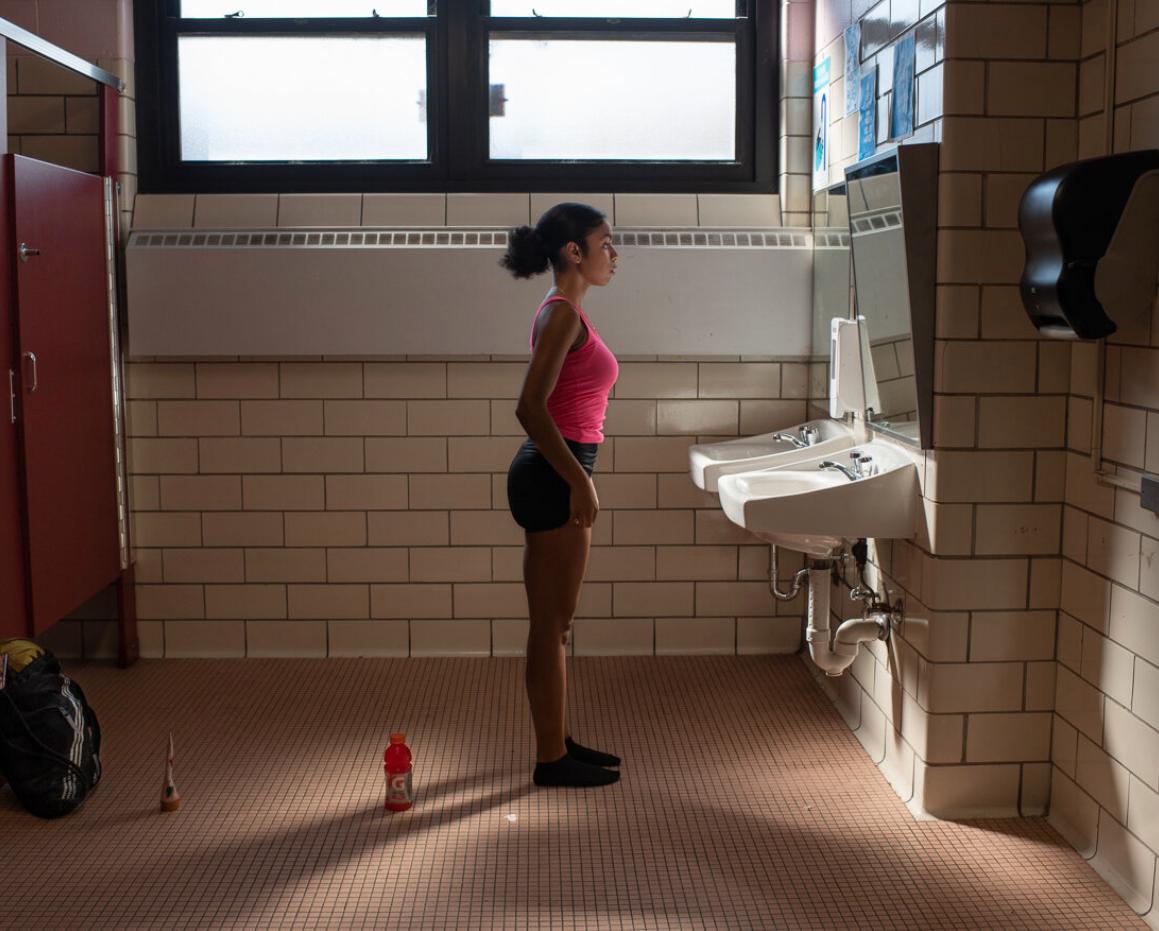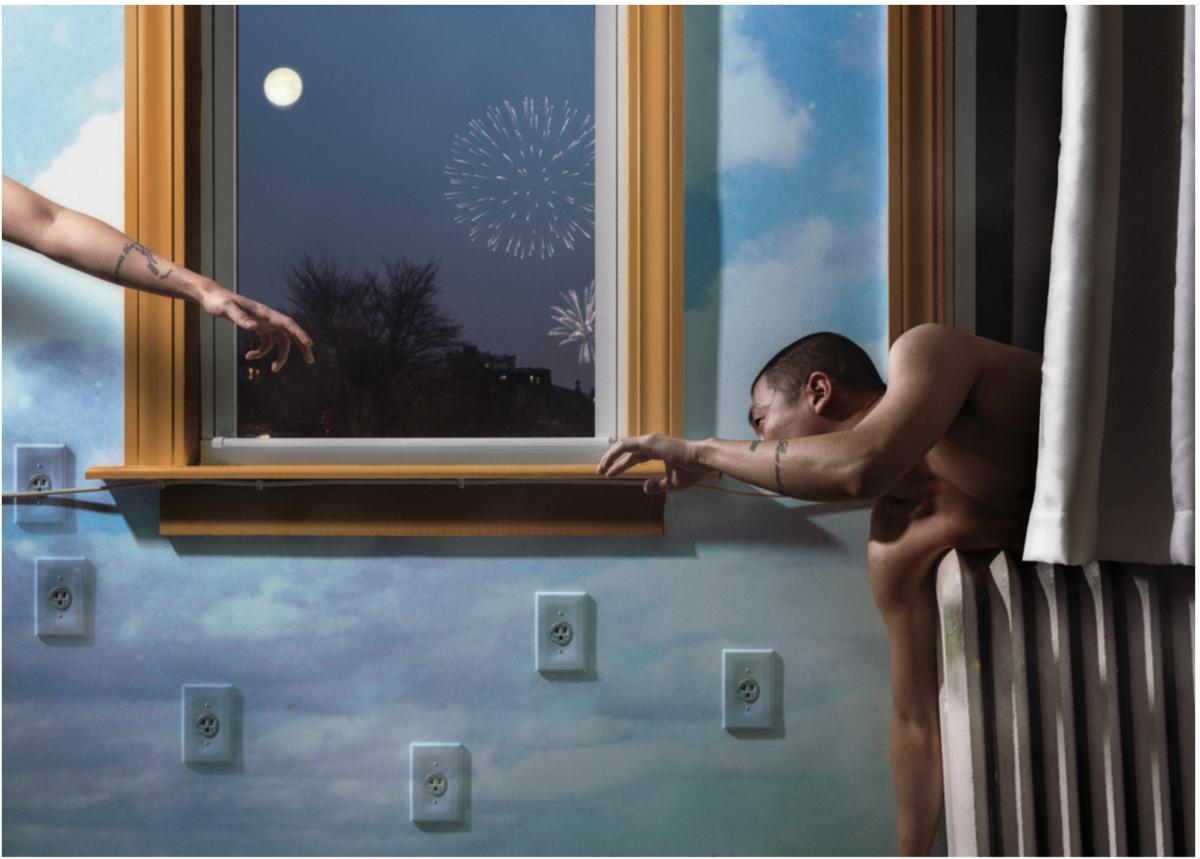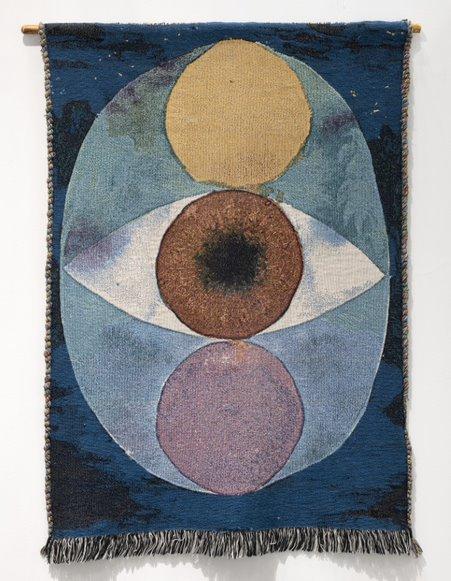If you think the third National Juried Photography Exhibition opening the Academy Art Museum’s spring-summer season is more of the same, think again.
For starters, the summer of 2020 edition was seen on-online-only by many who viewed it at all due to COVID-19 restrictions. But what truly distinguishes this national juried show from its two predecessors is the serially thematic nature of each presentation, selected blind (no names attached to prospective entries) by artist Kris Graves.
In the historic Lederer Gallery, the original circa 1800 museum structure, “New Photography III,” begins on the left with Kristen Joy Emack’s intimate 2021 black-and-white series of her daughter and her daughter’s cousin wading in their undies and, later, focusing on one of the girl’s faces framed by a canopy of ferns and the two of them in a tangle of twisted tree branches. In a final image, one girl lies on the pavement with a mask atop her head as the other’s hand draws a chalk tiara to complete their play portrait.
The contrast with the next series could hardly be sharper. Michael Iacovone deploys geometric curves to connect earth-scapes with solar objects in studies bearing such titles as “A System to Measure Myself Against the Arch of the Sunset,” in which “myself” is represented by an ant-scale figure on a desert landscape. Meanwhile, Gregg Evans concentrates on everyday life in his relatable series, from “Reptile,” a turtle traversing a gravel path, to “Sunset, May,” a satellite dish upstaging a blush-red sky.
Returning to human engagement, Melissa Ann Pinney brings a youthful arena of diversity into individual interpretation with her 2020 Chicago public schools project. These are not your mother or father’s school photos but rather a series of look-at-me personal statements: a girl wearing cartoon-figure tights accented by a colorful stack of bead bracelets and a pastel necktie; another young lady poised as if for flight in her turquoise jacket with arms spread like butterfly wings, and a COVID-masked black man wearing a gold Christian cross necklace.
Portraits of a more abstract nature mark Aline Smithson’s Fugue series exploring the finite lifespan of seemingly immortal digital files. Some of her “Fugue States” involve otherworldly negative imagery while others evoke right- or left-facing striped profiles, some with peek-a-boo conventional photos glimpsed like trapped personas within.
Lenard Smith introduces an architectural theme with tall cylindrical shapes beneath a roof, cones and triangular shapes supporting a bridge, and other geometric forms imitating a statue with arms. That sets the stage for an architectural shelter from what might be considered R-rated themes in the last two displays in the Lederer Gallery. Michael Young’s “Hidden Glances” series is partially hidden from wider gallery view behind a three-sided alcove which encompasses photos of a topless man inside a featureless male torso and a “Leather on Leather” composite of a partially nude male interspersed with S&M play clothes and toys. Margaret Murphy offers a feminine glance into social media “self-televication,” including such selfies as “Rosy Cheeks” (freckled) and “Adoration,” a girl apparently admiring her skimpily clad body.
In the Healy Gallery across the hall, “New Photography III” continues with a series of images by Korean-American Jeong Hur that, ironically, endeavors to “disprove the notion that photos depict the world truthfully.” Among these are digitally manipulated shots of a cloud-shaped human figure and a hand-of-God tableau inspired by Michelangelo’s Sistine Chapel fresco. Noel Spirandelli further explores the sleight-of-eye theme with his “oddities of modern life,” among them reverse white tattoos on a black man’s face and color-matching prints on the clothes of “Mike” and the entire Fremont Hotel room he occupies.
“Wish” by Jeong Hur
Rashod Taylor endeavors to capture a slice of domestic African-American life with photos of himself and his son LJ, from “Bathtime” to “It’s Complicated” – a shot of his son holding a small American flag with his dad’s image reflected in the glass door behind him. Jon Feinstein addresses a tragic family theme indirectly with his typology study comparing the deterioration of evergreens in the Northwest with the progression of his mother’s Alzheimer’s disease.
Ahmed Ozsever’s series of rural and industrial landscapes takes an aerial view of scenes tinted in what reminds me, as unlikely as it sounds, of fine blue-on-white Delft chinaware, scarred in one image with gray gravel. Thomas Stoffregen’s panoramic study focuses on severely neglected urban architecture in an undisclosed Midwestern city. It’s a Rust Belt photo album sadly familiar in American cities on either coast or in-between flyovers – boarded-up commercial properties on either corner and a ballfield no one plays on anymore.
Edward Bateman’s series indirectly reflects the pandemic years from which we are now, hopefully, emerging. Confined indoors in his Utah home, Bateman recreated famous Western landscapes on his kitchen tables to photograph instead of the real thing – from “Yosemite in Winter” to “Bryce No. 26” in a virtual national parks tour. All without leaving the gallery.
***
Just down the hall, be sure not to miss “Manifesting Paradise.” Adrienne Elise Tarver creates a mini-Garden of Eden in her caulking and acrylic wire mesh mimicking botanical fronds and ferns amid other products of her artistic skillset. This includes the “Mirage” series of small watercolors inspired by a deck of Tarot cards; “The World,” a three-eyed tapestry displayed above the fireplace in the first of the two-room gallery; and “Namesake,” a painting of a plantation house near the lost town of Tarverville engulfed in flames, symbolizing slavery’s end.
Steve Parks is a retired arts critic and editor now living in Easton.
“NEW PHOTOGRAPHY III” through July 10, Academy Art Museum, 106 South St., Easton. Also, ADRIENNE ELISE TARVER” MANIFESTING PARADISE” through July 24, artist talk on July 13. 410-822-2787, academyartmuseum.org






Write a Letter to the Editor on this Article
We encourage readers to offer their point of view on this article by submitting the following form. Editing is sometimes necessary and is done at the discretion of the editorial staff.